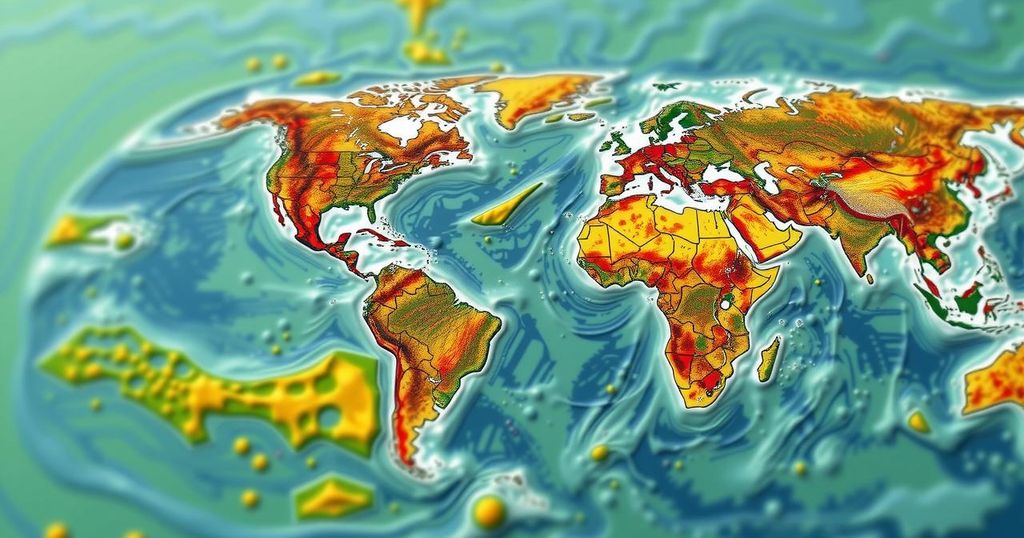Ancient Origins of El Niño: Research Indicates Oscillation Exists for 250 Million Years
A recent study indicates that the El Niño oscillation, responsible for major alterations in global weather patterns, has been active for at least 250 million years, demonstrating often greater intensity than present conditions. This historic perspective is crucial for understanding future climate variability.
Recent modeling experiments have unveiled that the weather-altering El Niño oscillation, which manifests as a large region of warm ocean water in the tropical Pacific, is a phenomenon that dates back at least 250 million years. This significant finding has emerged from collaborative research conducted by scientists at Duke University and their associates, indicating that the fluctuation between El Niño and its colder counterpart, La Niña, was not only present during ancient geological times but also exhibited greater intensity than what we currently observe. According to the researchers, the oscillations studied were remarkably pronounced even when the continents were situated differently than they are at present. The implications of these findings were documented in the Proceedings of the National Academy of Sciences, published on October 21, 2024. The El Niño phenomenon is studied extensively due to its profound impact on global weather patterns. It can disrupt usual weather currents, leading to dry conditions in regions such as the U.S. Northwest and excessive rainfall in the Southwest. Its counterpart, La Niña, influences weather by drying the Southwestern U.S. and affecting climate patterns elsewhere, including Eastern Africa and South Asia. Utilizing advanced climate modeling tools similar to those employed by the Intergovernmental Panel on Climate Change (IPCC), the researchers conducted a historical analysis that focused on deep temporal sections of the Earth’s climate system. The complexity of this task required simulations over segmented million-year intervals, as continuous yearly modeling was unfeasible. The study indicated significant variances in ocean thermal structure and wind patterns over extensive timeframes, concluding that these factors play a crucial role in the oscillation’s historical intensity. Notably, the researchers observed a cooler solar radiation environment coupled with higher levels of atmospheric CO2 in the Mesozoic era, resulting in considerably warmer oceans and atmospheres compared to today. The findings highlight that understanding historical climates is essential for making reliable predictions about future climate trends. As stated by the lead researcher, “If we want to have a more reliable future projection, we need to understand past climates first.” This research not only deepens our comprehension of El Niño’s climatic impact but underscores the interplay between oceanic and atmospheric dynamics over geological time scales.
El Niño is a critical climatic phenomenon involving the periodic warming of ocean waters in the central and eastern tropical Pacific, influencing global weather patterns and climate variations. The oscillation between El Niño and La Niña effects, collectively understood as the El Niño–Southern Oscillation (ENSO), has been a focal area of climate science. Historical and paleoclimatic studies offer insights into how these ocean-atmospheric interactions have evolved, underscoring their significance in shaping rainfall patterns and temperature fluctuations across continents. Research into the history of El Niño has gained momentum as scientists strive to comprehend climate behaviors in a changing world. This recent study from Duke University leverages sophisticated climate models to investigate ENSO’s occurrences throughout millions of years, providing valuable data to forecast possible future trends amidst climate change factors that threaten to disrupt these natural cycles.
The research from Duke University substantiates the longevity and intensity of the El Niño oscillation, revealing that it has been a significant climatic feature for at least 250 million years, often with greater magnitude than today’s events. The outlined study emphasizes the critical need to consider both oceanic thermal structures and atmospheric winds to understand the complexities of ENSO fully. Furthermore, it establishes a precedent for utilizing historical climatic data to enhance future climate predictions, thereby contributing to our preparedness for changes in global weather patterns necessitated by climate dynamics.
Original Source: phys.org




Post Comment